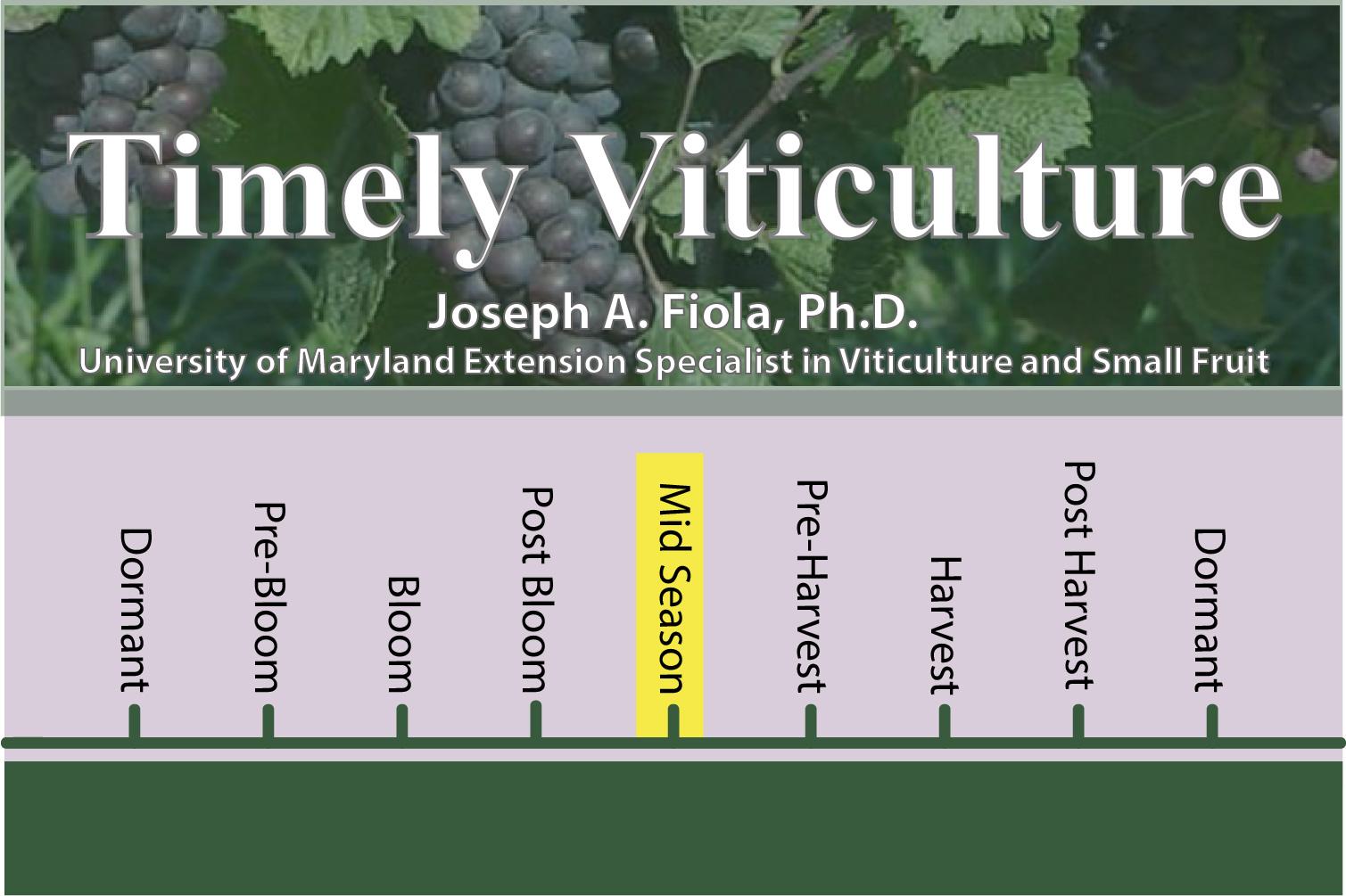Crop Management
The goal of most grape growers is to produce the highest possible quality grapes for wine. For making the best wine, the highest quality grapes are typically the most mature and uniformly ripened. In today’s quality-driven marketplace, the best fruit will command the greatest demand and the highest prices. The weather during the growing season, soil nutrition and moisture, and cultural practices are all important factors in determining fruit quality. However, for many cultivars, few techniques impact fruit maturity more than regulating yield to achieve a balanced vine and uniformly ripened fruit with optimal variety character and intensity. A previous “Timely Viticulture” on Crop Estimation addressed estimating the existing crop in the vineyard. Once tons per acre or pounds per vine data is available, it is easy to work towards achieving a targeted yield. This issue will address adjusting the crop level for the desired outcome.
Problems associated with over cropping
- Delayed ripening.
- In the Mid-Atlantic region, where many vineyards reside in areas of marginal season length, achieving full ripeness every season is a challenge, especially with late-ripening cultivars (e.g. Cabernet Sauvignon).
- Increased risk of disease, bird, and vertebrate predation; the longer the fruit hangs in the vineyard, the greater the risk.
- Increased risk of experiencing tropical storms.
- Decreased fruit quality.
- Uneven ripening within and among clusters.
- Poor color.
- Poor sugar content.
- Poor varietal character intensity.
- Increased levels of herbaceous character from methoxy-pyrazines.
- Inadequate tannin ripeness leading to high astringency.
- Diseased berries due to spread by cluster to cluster contact.
- Increased risk of winter damage.
- A vine that is over-cropped will partition less carbohydrate reserves to perennial wood (trunks, cordon, canes) which is needed to maximize winter hardiness.
- Delayed wood maturity will increase the risk of early frost/freeze damage.
For young vines
- Crop regulation usually involves removing any fruit in the first and second years, except on second-year vines of exceptional vigor, which should be allowed a mature a balanced crop.
- On low vigor sites and on weak vines, even in the third leaf, reducing the crop may be a wise measure to keep the vine healthy and improve establishment.
- A vine that is over-cropped when it is young may never reach its full production potential and will be much more prone to winter damage and crown gall.
Factors to consider when setting a target yield
- Timing of veraison. If the season is late, the crop may need to be thinned more severely to encourage earlier ripening.
- If significant tropical storm activity is predicted, a grower may elect to carry a smaller crop to allow it to be less sensitive to significant swings in moisture.
- If early frosts are expected, a smaller crop should be carried to allow the crop to ripen earlier and allow the vines to recover and prepare for winter.
- If the canopy has been compromised by disease (defoliated by downy) or insects (heavily laced by Japanese beetles) the crop should be reduced.
- Grower/winery agreements may include targeted yields to achieve specific bottle price points.
An experienced grower will know their site and will develop a sense of what the optimal yields are to achieve full ripeness for specific cultivars/plots under specific vintage conditions.
Fruit thinning
Once crop load has been determined through crop estimation, the fruit must be thinned to the target yield.
- Veraison thinning is desirable, especially for red-fruited cultivars, as it is easier to determine and thin the clusters that are behind in ripeness, show dis-synchronous cluster ripening, or are diseased.
- Veraison thinning (versus post-fruit-set thinning) is also desirable to potentially help reduce vigor on vigorous sites by allowing more “sinks” (cluster) to sap some of the extra energy during the growing season.
- In vineyard soils with high Potassium (K) content, waiting until veraison to thin allows the extra clusters (that will be dropped) to be used as "sponges" to absorb some of the excess K to keep the pH of the remaining fruit from rising too quickly during ripening.
- Remove diseased or damaged fruit first.
- Remove clusters that are behind in ripening.
- In most cases, remove apical clusters (highest on shoot for VSP).
- Remove clusters that have been receiving less sunlight.
- On cultivars that can “tolerate” high cropping levels (‘Vidal’, ‘Chambourcin’, etc.) instead of just dropping fruit, the excess fruit can be harvested “early-ripe” and used for sparkling, rose, or verjuice; or multiple times harvests (early, normal, late-harvest) can be made for various wine styles.
- For rows running east/west, thin more clusters from the north exposure which are lagging in ripeness.
Timely Viticulture is designed to give those in the Maryland grape industry a timely reminder on procedures or topics they should be considering in the vineyard.
